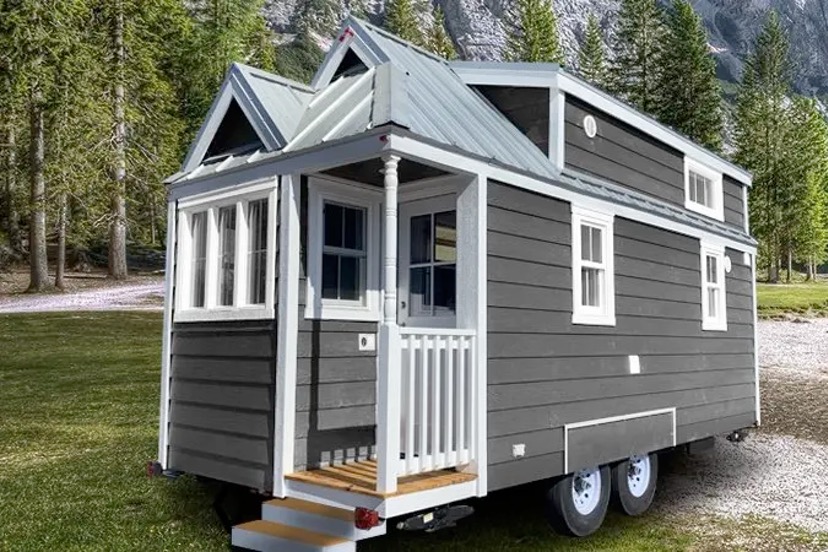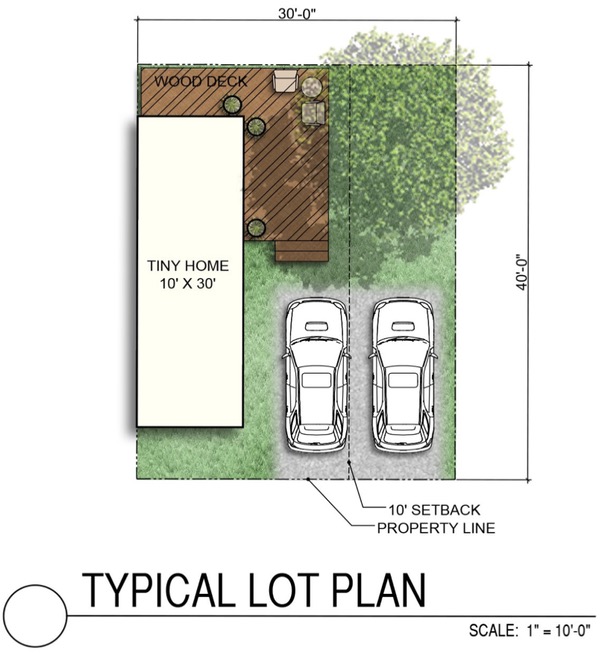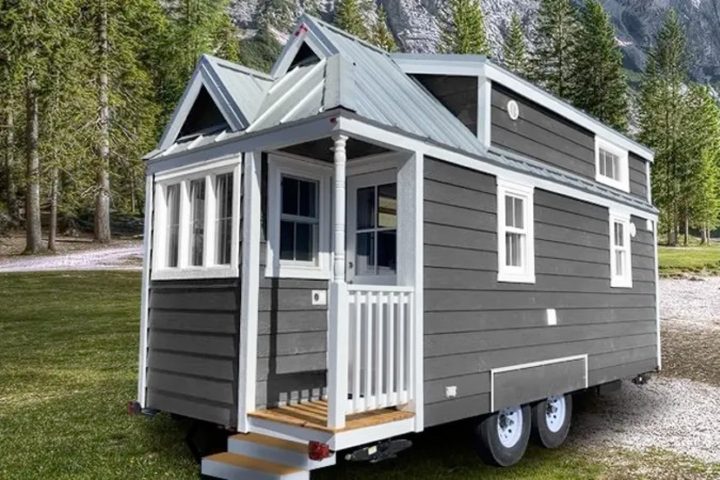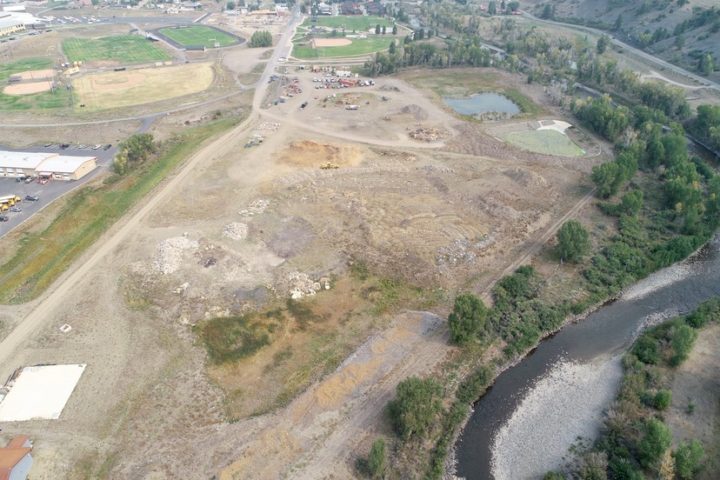A local activist sent me an email shortly after I posted Part Five of this editorial series on Friday. He’s been involved in a couple of affordable housing efforts over the past few years, and he suggested that $60,000 for a ‘Tiny Home on Wheels’ is not an unreasonable estimate “if it is built to quality standards shy of fully custom.”
And the $500 per month space rent discussed by the Town Planning Commission on Tuesday during their Zoom meeting with prospective ‘tiny home park’ developer Brad DeYoung… well, perhaps that is also reasonable? So, then, a monthly housing cost for ‘mortgage plus space rent’ of maybe $1000 a month… plus utilities?
Mr. DeYoung had told the Planning Commission that this would be the first Tiny Home on Wheels (THOW) park development attempted by Legacy Alliance, but that his company had previously “owned, acquired, developed about $1 billion in real estate across probably 23 states” including multi-family projects ranging from one-story to 55 stories.
The park would, he said, accommodate perhaps 46 THOWs. The tiny homes would be owned by their occupants, who would pay a park rental fee and would be required to build an outside deck attached to their home.
THOWs appear to be available in a range of sizes, but if you want to tow the house behind your pickup truck… without a special permit…
“…it must conform to certain size limits. In most U.S. states this maximum size is 13.5-feet tall, 8.5-feet wide, and 40-feet long – 65-feet maximum including the tow vehicle.”
– Road Limits for Tiny Houses on Trailers, by Tiny House Design
The proposed Legacy Alliance development is not conceived as a temporary stopping place for people living on the road, however, but rather for people who want to settle in one place, long-term. The park lease would have, we were told, a minimum one-year term. The cozy ‘village’ would include a community building with indoor storage units, also available for rent… to keep the tiny yards from filling up with all the household and recreational items that can’t fit inside a 10×30 foot tiny home.
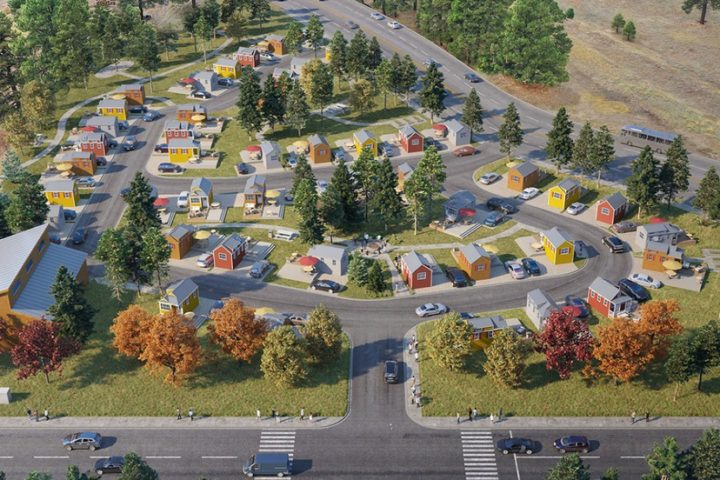
The park would also include a couple of gardening areas, a communal picnic area, and — at the far west end of the parcel, where the topography was a bit too challenging for more homes — a fenced ‘dog park’.
A drawing shared with the Planning Commission portrayed a tiny home measuring 10 feet by 30 feet — about 300 square feet.
If you visit one of Colorado’s premier builders of THOWs — Tumbleweed Tiny House Company — you can view, for example, the Cyprus model. This home has 164 square feet of living space on the “ground floor” and a couple of smaller loft spaces above. Considerably less than 300 square feet.
Fork out a $8,700 down payment and your monthly mortgage is only $583 a month… for the pleasure of living in a space slightly smaller than a large master bedroom.
I know very little about real estate, and even less about multi-family housing developments. But I do have a pocket calculator, and I’m not afraid to make myself look foolish. The numbers on my calculator suggest that the Tumbleweed Cyprus model (financing offered at 6.75% on 23-year terms) would cost the purchaser about $169,000 over the life of the mortgage.
The owner would also pay — if Mr. DeYoung’s estimate is accurate — about $500 per month for a parking space in the THOW village. That appears to add $138,000 to the cost of living in a ‘tiny home park’ over the life of a 23-year loan. Add those two numbers, and the owner has spent $300,000 — but still has no ownership of the land under his or her feet.
When you add utilities and maintenance and so on, your monthly housing costs might exceed $1,300 for a Cyprus model. Based upon comments made on March 23, the Town Planning Commission commends this approach as part of a reasonable solution to Pagosa’s housing crisis.
If I were a businessman (which I’m not) and I had an option to finance several apartment buildings — enough to accommodate, say, 46 families — from whom I could collect $1000 a month in rent, per unit… I might be looking at $16 million in construction costs for the development. (I’m basing these numbers on the Rose Mountain apartments now going up next to Town Hall. The Archuleta County Housing Authority is spending about $12 million to build 34 apartment units. That dollar amount pencils for them, however, because it’s a Low Income Housing Tax Credit project, subsidized by you and me via the federal government.)
So, say, $16 million to construct an apartment complex with 46 units, each renting for $1000 a month… I could potentially collect $550,000 per year. Even if I had paid for the project completely of my own pocket and didn’t have any mortgage and interest payments, it could take about 29 years to break even. Even at $2000 a month rent, it would take 15 years. (Not including any maintenance costs, or management costs.)
But if a company could spend, say, $1 million developing some parking spaces… and allow people to roll in their personally-financed THOWs… and then charge them $500 a month for each parking space? The way I figure it, you could fully pay off your investment in 5 years. After that, it’s all gravy: an annual rental income of perhaps $275,000… and very little maintenance… very little insurance… very little in the way of landlord-tenant headaches…
Who wouldn’t pick that option, assuming working people in Pagosa are truly willing to spend $300,000-plus to live in an oversized walk-in closet for 23 years?
To my mind, a THOW village makes better economic sense — for the working class — if the parking space rent is in the $100-$200 per month range. Which suggests that the land would be owned by a local government, or by a non-profit community land trust.
Curiously enough, the Town of Pagosa Springs already owns 26 acres of vacant land adjacent to the high school — but our current Town leadership wants to develop the entire 26 acres into yet another municipal park. (We have at least 180 acres of municipal property already set aside, and used, for parks.)
Part of this 26 acre parcel might be an absolutely perfect spot for 46 moveable homes. Close to pedestrian trails. Close to schools. Close to downtown.
Close to being affordable?

